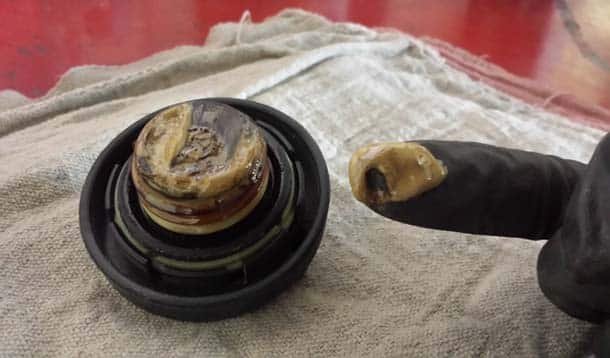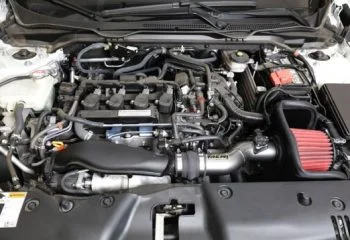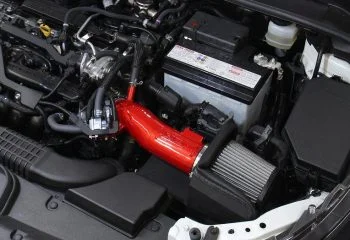The engine is a very important part of the car. It is what makes the car move. Without an engine, a car would not be able to move.
The engine is responsible for powering the car. It uses gasoline or diesel to create energy which turns the wheels of the car. Not all cars have the same type of engine.
In order for the engine to work properly, the oil acts as its bloodstream. It needs to be changed every few months or as suggested by the car’s manual in order to keep it running smoothly.
On a not-so-beautiful day, you discover there is milky oil in engine. You’re not quite sure what this means but you think it can’t be good.
If you’re like most car owners, you probably don’t think much about the oil in your engine. But if you start to see a milky substance in your car, it’s time to take notice.
This could be a sign that there is water in your oil, and it’s important to take action quickly to prevent further damage.
In this blog post, we’ll explain what water inside engine oil is, how to check for it, and what steps you can take to fix the problem.
So keep reading for all the details.
What's in this post?
How to fix milk oil in the engine?
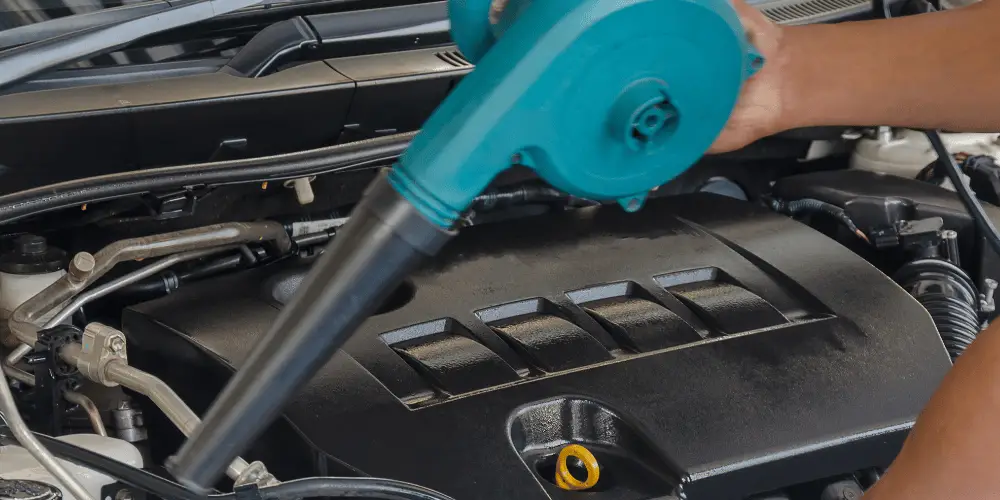
If you suspect that your engine oil is milky, it’s important to take action right away. The first step is to check the oil level and quality. If the oil looks dark or muddy, it’s likely that water has mixed in.
You should also check the coolant level and quality. If the coolant is low or appears to be contaminated, it’s likely that the oil is milky.
Once you’ve confirmed that the oil is milky, the next step is to flush the engine. This will remove all of the contaminated oil and coolant from the engine and replace it with fresh oil and coolant.
It’s important to use the correct type of oil and coolant when flushing the engine. Consult your owner’s manual or a professional mechanic to make sure you’re using the right products.
After the engine has been flushed, it’s important to keep an eye on the oil level and quality. Milky oil in engine can be caused by a variety of problems, so it’s important to identify the root cause of the problem. Once you’ve done that, you can take steps to prevent it from happening again.
Be sure to check for leaks before replacing the oil and coolant if you don’t want to waste your time.
Useful read: How much metal in oil is normal
Why is there milky oil in engine?
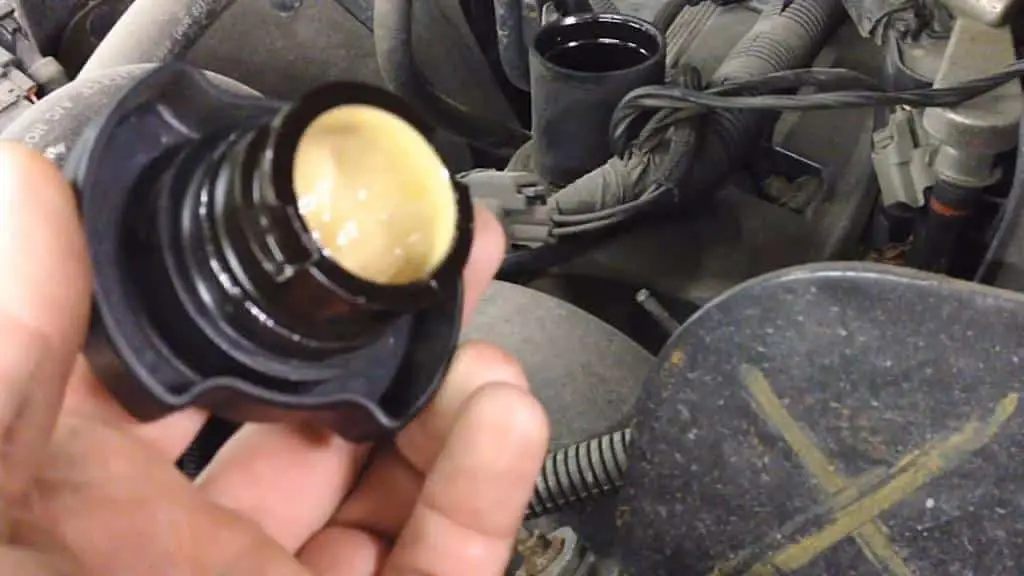
Water inside engine oil is a serious issue because it can cause severe damage to your engine. The water can mix with the oil and create a sludge-like substance that can clog up your engine and prevent it from working properly.
If you don’t take care of the problem quickly, it could lead to engine failure. And that’s something you definitely want to avoid.
So what causes water inside engine oil? There are a few different reasons this could happen:
Condensation In The Engine
While most people think of oil as being black, it can actually range in color from light brown to pitch black. If your oil looks milky, it’s likely due to condensation.
This is especially common in cars that are driven infrequently. When a car sits for a long period of time, the water in the air will condense on the engine and mix with the oil.
The color of oil on the dipstick can help to prevent this issue by providing a way for the owner to monitor their car’s oil levels.
By checking the What color should oil be on the dipstick regularly, the owner can ensure that their car’s oil levels are where they should be. By doing this, the owner can prevent their car from becoming overfilled with oil, which can lead to condensation and milky oil in engine.
Coolant Leak
A coolant leak is another common cause of water in oil. If your car’s cooling system is leaking, the coolant can mix with the oil and cause it to turn milky. As a result, the oil will no longer be able to properly lubricate the engine, and serious damage can occur.
You can check for coolant leaks by checking the hoses and connections in the cooling system for any signs of leaks or damage.
If you notice smoke coming from your exhaust or a brownish hue in your coolant reservoir, it’s important to take action right away.
These are signs that your engine oil and coolant may be mixing, which can cause serious damage to your engine. One way to prevent this problem is to regularly check the level of oil in your engine.
Also, make sure to routinely top up your coolant levels so that they’re at the correct level. By taking these simple precautions, you can help prevent an engine oil and coolant mixup.
Useful read: Wrong Oil in Car Symptoms and How to Fix It
What damaged parts can lead to milky oil in engine?
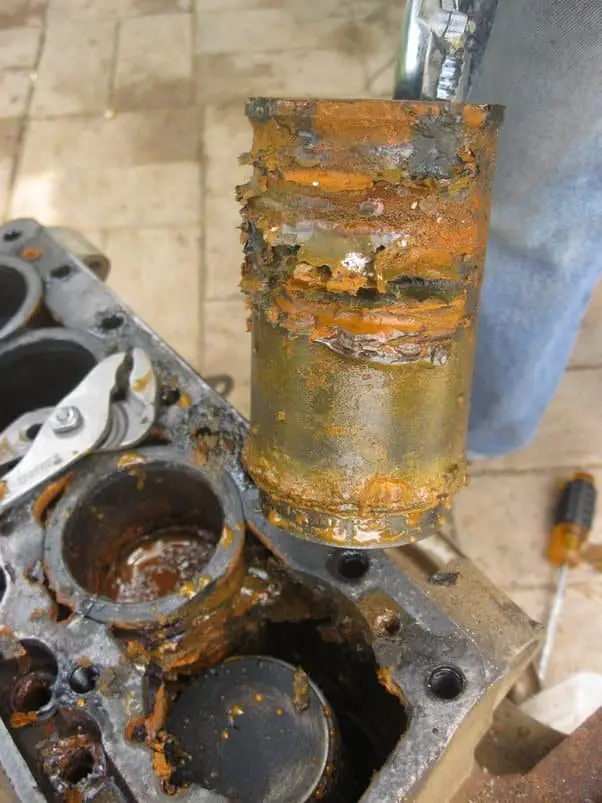
There are a few other potential causes of water inside engine oil, such as:
- Head Gasket Leak: The head gasket is located between the engine block and the cylinder head. It helps to seal the cylinders and prevent coolant and oil from leaking into each other. If the head gasket is damaged or blown, it can cause coolant and oil to mix, which will result in milky oil.
- Cracked Block: A cracked engine block can also cause water and oil to mix. This is usually caused by a cooling system leak that goes undetected for a long period of time. As the coolant leaks out, it can cause the engine block to crack. This will allow water and oil to mix, and the result will be milky oil in engine.
- Worn Out Engine: An old or worn-out engine is more likely to have water inside engine oil because the seals and gaskets are no longer as effective at preventing leaks. As the engine ages, the seals and gaskets can become dry and cracked, which will allow water and oil to mix.
How bad would it be if there was milk oil in engine?
Water can mix with the oil and create a sludge-like substance that can clog up your engine and prevent it from working properly. This can cause serious damage to your engine and may even lead to engine failure.
One of the most common causes of an overheating engine is a mix-up in the coolant. This can be caused by a head gasket leak or engine damage.
What many people don’t realize, however, is that oil can become contaminated with water, which will cause it to lose its ability to lubricate. This can lead to a host of problems, including engine wear and reduced fuel efficiency.
If you notice that the oil on your dipstick is a different color than usual, this could be an indication of a coolant mix-up. If you’re unsure of what to do, consult a professional mechanic. They will be able to diagnose the problem and recommend the best course of action.
How much will it cost you to fix the milky oil in engine?
The cost of fixing milky oil in engine will depend on the cause of the problem. If the problem is caused by a head gasket leak, it can be fixed by replacing the head gasket.
If the problem is caused by an engine block crack, it can be more expensive to fix because the engine block will need to be replaced.
The best way to determine the cost of fixing milky oil in engine is to consult a professional mechanic. They will be able to diagnose the problem and give you an estimate of the repairs.
FAQs About Milky Oil In Engine
Does milky oil always mean head gasket?
There are many causes for the white milky fluid on your car’s dipstick, but it doesn’t necessarily mean you have a bad head gasket. The problem may also be caused by leaks in other areas, such as the coolant or oil pressure sensor, which would result in an improper repair program carried out by someone who doesn’t know what they’re doing. Without the proper tools to take apart particular panels underhood first before removing them altogether, any subsequent damage might be done safely instead!
Is it OK to drive with milky oil?
If the milky oil is due to a head gasket leak, it’s not safe to drive the vehicle. The coolant can mix with the oil and cause engine damage.
It’s also not safe to drive a car with an engine block crack since the engine block may shatter and result in major engine damage.
If you’re unsure of what’s causing the milky oil, it’s best to consult a professional mechanic. They will be able to diagnose the problem and recommend the best course of action.
How do I stop condensation in my engine oil?
Be sure to give your engine a few minutes of warm-up before you start driving. This will help remove any small condensation that may have built up on the Minutes latter, but if it’s been awhile since then and there is no sign of moisture coming out anymore we recommend taking her/his car in for service!
Conclusion
Although it might seem like a daunting task, it’s important to remember that there are many resources available to help you get started with learning about and caring for your engine.
At the very least, be sure to consult your vehicle’s owner’s manual and follow the manufacturer’s recommended service schedule. If you have any questions or concerns, don’t hesitate to ask a professional mechanic.
They will be able to help you diagnose the problem and recommend the best course of action. Glad to have provided you with useful information about oil and how to fix it when milky oil in engine. I hope you always pay attention and drive safely.

